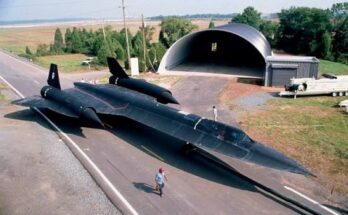
On June 1, 2009, Air France Flight 447 vanished over the Atlantic Ocean while en route from Rio de Janeiro, Brazil, to Paris, France. The aircraft, an Airbus A330-203 carrying 216 passengers and 12 crew members, was lost with all 228 souls on board. The tragedy shocked the world and sparked one of the most challenging and complex aviation investigations in modern history.
The flight departed Rio de Janeiro–Galeão International Airport at 7:29 PM local time on May 31 and was scheduled to arrive at Paris Charles de Gaulle Airport the following morning. The first few hours of the journey were uneventful, and the aircraft entered cruise altitude at 35,000 feet over the Atlantic Ocean. As the aircraft approached the Intertropical Convergence Zone, known for its turbulence and thunderstorms, it encountered severe weather conditions.
Around 1:35 AM UTC, the aircraft’s autopilot disengaged. Almost simultaneously, the pitot tubes—sensors critical for measuring airspeed—began to ice over, leading to inconsistent and unreliable airspeed readings. This caused confusion among the flight crew, who struggled to interpret the erratic instrument readings. The plane’s stall warning sounded multiple times, yet the pilots did not take appropriate corrective actions. Instead of lowering the nose to regain lift, they pulled back, worsening the stall condition.
For nearly four minutes, the aircraft remained in a deep stall, descending rapidly until it slammed into the ocean at approximately 2:14 AM UTC. The aircraft’s wreckage sank to a depth of nearly 4,000 meters (13,000 feet), making recovery efforts immensely difficult. For days, only small pieces of debris and a few bodies were found floating on the ocean surface, providing little clarity about what had occurred during the flight’s final minutes.
It would take nearly two years to locate the aircraft’s black boxes. In May 2011, using advanced underwater vehicles, investigators recovered the flight data recorder and cockpit voice recorder. The data confirmed what many had suspected: the crash resulted from a combination of technical failure and human error.

The initial problem—icing of the pitot tubes—was a known issue that Airbus and Air France had been addressing. But what followed revealed critical gaps in pilot training and automation dependency. The co-pilot flying the aircraft did not recognize the signs of an aerodynamic stall, and his incorrect inputs went uncorrected for crucial minutes. Meanwhile, the captain had left the cockpit for a scheduled rest and returned only after the situation had spiraled out of control.
The French aviation authority BEA (Bureau of Enquiry and Analysis for Civil Aviation Safety) released its final report in July 2012. It cited the primary cause of the crash as the aircraft entering a high-altitude stall that was not corrected by the crew. Contributing factors included the temporary loss of airspeed data due to ice crystals obstructing the pitot tubes, the crew’s failure to understand the stall warnings, and their lack of manual flying skills in such a critical situation.
The disaster led to widespread changes in aviation safety and training. Airlines around the world began emphasizing manual flying skills during simulator training, particularly in high-altitude stall recovery. Airbus also accelerated the replacement of older pitot tube models across its fleet. Furthermore, there were calls to improve real-time tracking of aircraft over oceanic routes—something that has since been partially addressed through satellite communication technologies.
The tragedy of Flight 447 was a devastating reminder of the delicate balance between human skill and automation in modern aviation. It highlighted how pilots, often highly trained and experienced, can become overly reliant on automated systems and may struggle when those systems fail. More than a decade later, the lessons learned from this crash continue to shape pilot training and aircraft design.
Among the 228 victims were people of 33 nationalities, including families, business travelers, and crew members, many with long years of service. Memorials were erected in Brazil and France to honor their memory, and their loss remains etched into the collective conscience of the aviation community.

Air France Flight 447 was not just a crash—it was a wake-up call. It exposed vulnerabilities in aviation systems and human performance that had long been underestimated. While the lives lost can never be reclaimed, the lessons learned continue to influence safety standards and protocols that make flying safer for everyone today.


